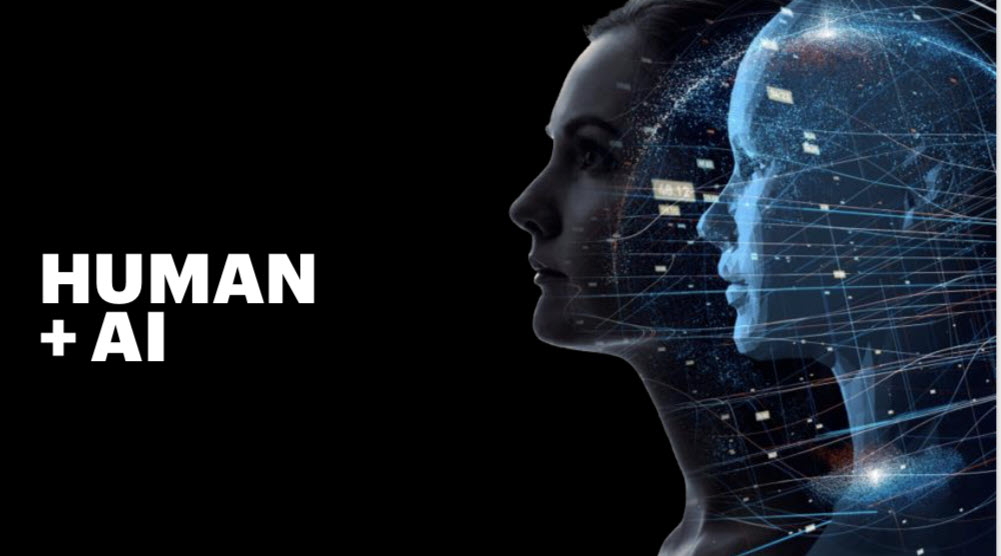
For all the hype and excitement surrounding artificial intelligence right now, the AI movement is still in its infancy. The public perceptions of its capabilities are painted as much by science fiction as by real innovation. This youth is a good thing, because it means we can still affect the course of AI’s impact. If we pursue AI purely with the goal of automating our lives, we risk pushing people aside. We would end up marginalizing human contributions, instead of optimizing them. Instead, we should pursue AI with the goal of augmenting our lives — as a means of benefiting humanity rather than devaluing it. Think of this path as human-centered AI, which seeks to free up people for more creative and innovative work. The technology is the same, but the goals of the systems we build are different. There’s a fine line between automation and augmentation. So, how can you ensure you’re pursuing human-centered AI? Start with how AI is built.
AI development models: The factory vs. the garage
When I was a kid, my dad’s hobby was woodworking, specifically building furniture, and he did it in our garage. What I remember was how he used the most of his space. My mom insisted that she be able to park her car in the garage, and that his tools should have homes when he wasn’t in the middle of a project. When he was in the middle of something, the garage could look a little chaotic, but it was never cluttered. Everything had a purpose and a home. The garage was designed to fit the needs and constraints of his environment.
Unfortunately, when creating AI we too often think of factories rather than garages. In any factory the goal is efficiency at scale. To achieve efficiency, design is separated from production, and then production is tuned for peak performance. This performance tuning makes many humans in factories simply extensions of tools. To judge whether a factory is set up well, the key metric of production is velocity.
A factory approach doesn’t make sense for something as abstract and virtual as AI development. Compared to a physical factory, software production is cheap to change over and doesn’t require capital investment to be ripped out and replaced. And turning developers into high velocity code assembly lines wastes a huge opportunity to cultivate highly trained, creative, innovative people.
An alternative is to approach AI development similar to the way my dad approached woodworking in his garage. A developer is not an executor of code but a creator. Tools exist to affect the creator’s vision, and the vision adapts based on the productive experience. Design and production work in tandem. The goal isn’t peak performance; it is innovation. The key metric is achievement.
You can recognize this “garage model” when you see people creatively building toward a project or goal. we invest time upfront making sure we all understand and can articulate the goal of project — the thing we are going to build. AI is more than code and technologies; it is an approach to problem solving. It’s a good approach that we think more people should use, but it’s still just a means to an end. The goal is what matters. When my dad started projects in his garage, he didn’t incrementally explore his way to a finished piece of furniture. He had a piece of furniture in mind and an initial plan of how he was going to make it.

The Applied AI Center of Excellence
When it comes to AI, a garage isn’t only a physical place. In the Applied AI CoE we run garages with teams of people sitting all over the world. A small AI garage will have a leader and a team of three to eight people. Larger garages will see that pattern fractal or reorganize outward to handle greater complexity. A key thing I have had to remember as an AI garage leader is that my role is not to direct work or control the ideas. This would create a factory and stymie innovation. Instead, my role is to set the initial vision or goal of a project and then prune ideas to maintain focus — in other words, my biggest contribution is to keep the garage clean. For me and other garage leaders, this can be difficult — especially if the leader was the one who originated the idea, but even when that was not the case, it can be hard to let go. Success belongs to the team; failure belongs to the leader. It’s natural to want to control away failure, but then the garage model would be lost.
This distinction between the factory and the garage is critical — performance vs. innovation. In a garage model, the people developing AI are centered in the process, and this creates a foundation for a system that reinforces human-centered AI. By increasing the number of people who have a personal stake in how AI is developed, we create an AI that has a stake in the people who use it.
What can a garage do for human-centered AI?
We have used AI garages to do such things as create apps that help people fight decision fatigue, recognize when someone is paying attention or is distracted, use the weaker constraints of the virtual world to reconnect people to the physical world, and create AI Starter libraries to share what we’ve learned.
These examples show that we believe effective AI capabilities don’t push people to the side. Instead, they place humans at the center, augmenting what people can do and how well they can do it. We achieve these things because our AI development model, the “garage model,” is similarly human-centered.


